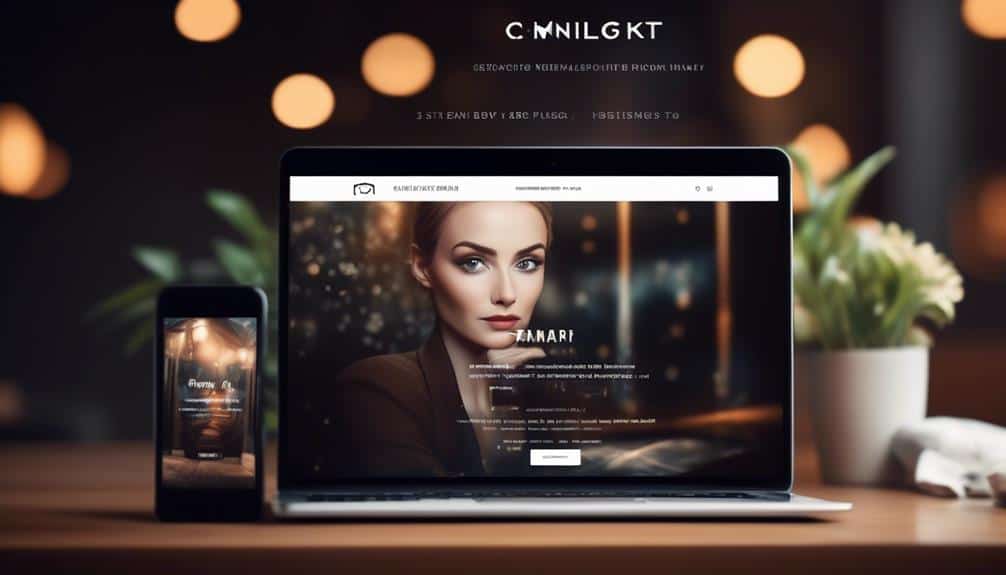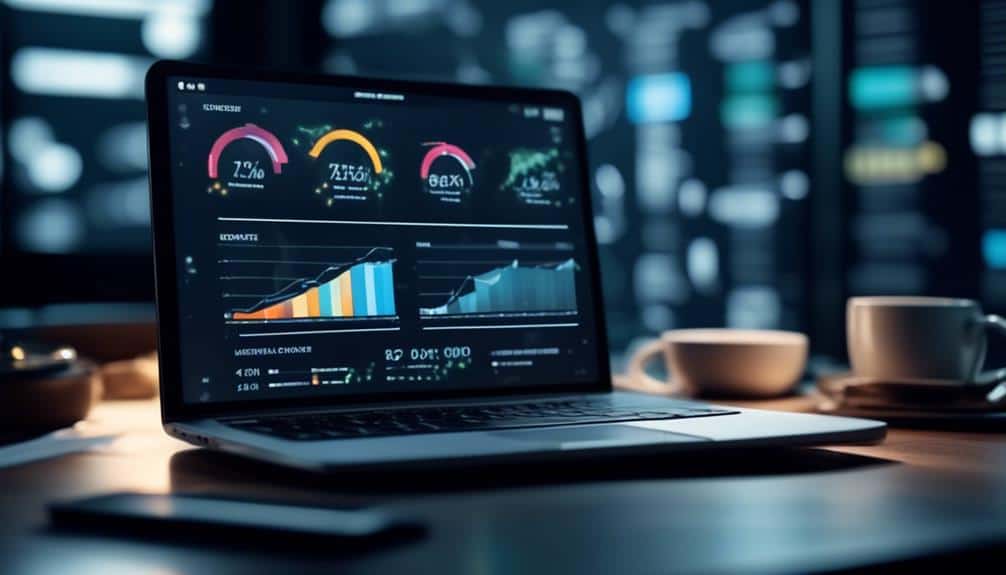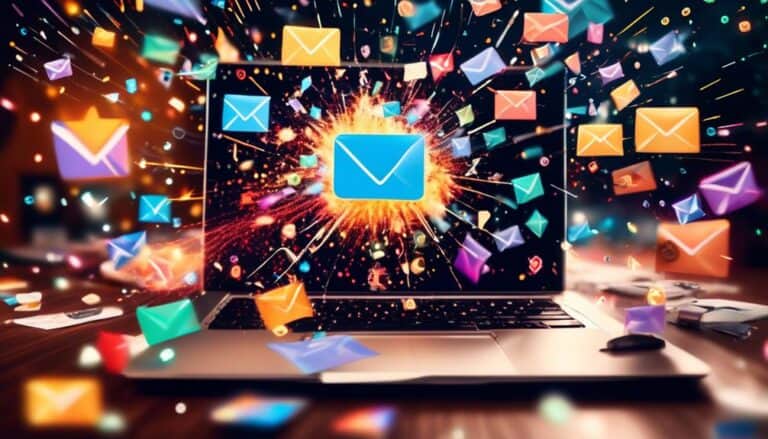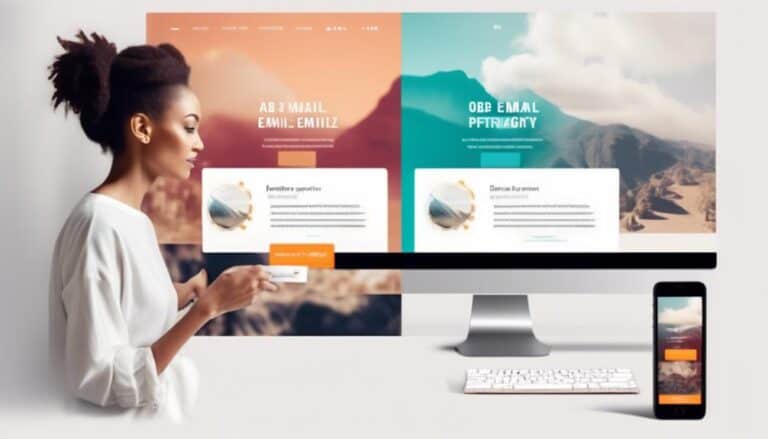Warning: Are You Overlooking These Automated Email Sequence Essentials?
Are your automated email sequences failing to convert leads into customers?
You may think you have all the essential elements in place, but there could be crucial aspects that you're overlooking.
In this discussion, we'll explore the often underestimated essentials that can make or break the success of your automated email sequences.
From personalization and audience segmentation to timing, subject lines, and call-to-actions, we'll uncover the key ingredients that can skyrocket your email campaign's effectiveness.
So, if you're ready to take your email marketing to the next level and achieve better results, keep reading.
Key Takeaways
- Personalization and segmentation in email sequences are essential for connecting with your audience on a deeper level and increasing engagement and conversion rates.
- Timing and subject lines play a crucial role in improving open rates and engagement. Crafting compelling subject lines that trigger an emotional response and sending emails at the right time can make a significant difference.
- Customizing email templates, using clear call-to-action buttons, and incorporating compelling copywriting techniques are vital for driving action and achieving desired results.
- Analyzing and optimizing email performance, avoiding common mistakes such as generic content and overwhelming subscribers, and tailoring emails to specific needs and interests are essential for maximizing engagement and conversion rates.
Importance of Personalization

Personalization is a crucial element in any automated email sequence, as it allows you to connect with your audience on a deeper and more meaningful level. By implementing personalization techniques, you can address each recipient individually, making them feel valued and understood. This not only helps establish trust and credibility but also increases the chances of engagement and conversion.
One of the key benefits of personalizing email sequences is the ability to tailor the content to the specific needs and interests of your audience. By gathering data and insights about your subscribers, such as their preferences, purchase history, or demographic information, you can craft personalized messages that resonate with them. This targeted approach ensures that your emails aren't only relevant but also highly personalized, making them more likely to be opened, read, and acted upon.
Moreover, personalization allows you to create a personalized customer journey, guiding your subscribers through the sales funnel. By sending customized emails at different stages of the customer lifecycle, you can nurture relationships, provide relevant information, and ultimately drive conversions. This strategic approach helps you build stronger customer relationships, increase customer loyalty, and ultimately boost your business's bottom line.
Segmenting Your Audience
To effectively segment your audience, you need to understand their unique characteristics and preferences. By dividing your audience into smaller groups based on factors like demographics, past purchase behavior, and engagement with your emails, you can tailor your email sequences to better meet their needs. This not only helps you deliver more relevant content, but also enables you to improve customer retention and increase conversions.
Segmenting your audience allows you to send targeted emails that resonate with specific groups of people. For example, you can create separate email sequences for first-time customers, loyal customers, and customers who've shown interest but haven't made a purchase yet. By doing so, you can focus on nurturing each group appropriately, addressing their specific concerns and motivations.
A/B testing is another valuable technique to consider when segmenting your audience. By testing different variations of your email sequences on different segments, you can gather data on what works best for each group. This data-driven approach helps you refine your email sequences and make informed decisions about content, timing, and design.
Timing Is Everything

Timing plays a crucial role in the success of your automated email sequences. When it comes to reaching your audience effectively, sending emails at the right time can make all the difference. By understanding the best practices for timing your emails, you can increase your email open rates and engage your recipients at the optimal moments.
To help you determine the ideal timing for your automated email sequences, consider the following table:
| Time of Day | Best for |
|---|---|
| Morning | Introducing new products or promotions |
| Afternoon | Sharing educational content or industry insights |
| Evening | Sending personalized offers or reminders |
| Weekends | Engaging with subscribers on a more relaxed schedule |
| Special Occasions | Connecting with your audience during holidays or events |
Crafting Engaging Subject Lines
Now that you understand the importance of timing your automated email sequences, let's dive into the art of crafting engaging subject lines.
Your subject line is the first impression your email makes on your audience. It has the power to entice them, pique their curiosity, and ultimately persuade them to open your email. So, how can you craft subject lines that aren't only attention-grabbing but also emotionally appealing?
One effective strategy is to tap into the emotions of your audience. Think about what motivates and excites them. Are they seeking solutions to their problems? Are they looking for inspiration or a sense of belonging? By understanding your audience's desires and pain points, you can create subject lines that trigger an emotional response. For example, 'Discover the secret to achieving your dreams' or 'Join a community of like-minded individuals.'
Another crucial aspect of crafting engaging subject lines is A/B testing. This involves creating two or more versions of your subject line and testing them to see which one performs better. By experimenting with different wording, length, and personalization, you can find out what resonates most with your audience. A/B testing allows you to continuously improve your subject lines and optimize your email open rates.
Designing Effective Email Templates

Designing effective email templates requires careful consideration of your brand's visual identity and the needs of your audience. To create templates that resonate with your audience and drive engagement, follow these essential tips:
- Customize Content: Tailor your email templates to match the interests and preferences of your subscribers. Personalize the subject line and body of the email to make recipients feel valued and understood. Use dynamic content that changes based on subscriber data, such as their location or previous purchases. By customizing the content, you can create a sense of relevance and increase the chances of conversion.
- Measure Success: Keep track of key metrics to evaluate the effectiveness of your email templates. Monitor open rates, click-through rates, and conversion rates to gauge the impact of your emails. Use A/B testing to experiment with different designs, layouts, and calls to action. Continuously analyze the data to identify what works best for your audience and make data-driven decisions to improve future email campaigns.
Implementing Clear Call-to-Actions
Now that you have designed effective email templates, it's time to focus on implementing clear call-to-actions that will drive action from your recipients.
Effective button placement is key, ensuring that your call-to-action buttons are prominently displayed and easily clickable.
But it's not just about placement – compelling copywriting is equally important, as it entices your audience to take the desired action.
Effective Button Placement
To optimize the effectiveness of your automated email sequence, strategically place clear call-to-action buttons that compel your readers to take action. The placement of these buttons is crucial in guiding your audience towards the desired outcome. Here are two key factors to consider for effective button placement:
- Button Color: Choose a color that stands out from the rest of your email design. Opt for a vibrant color that catches the reader's attention and creates a sense of urgency. Red or orange buttons often work well in driving action.
- Email Length: Keep your emails concise and to the point. A long and overwhelming email can deter readers from taking action. Break down your message into smaller, easily digestible sections and use bullet points to highlight important information. This will make it easier for your audience to take in the content and motivate them to click on your call-to-action buttons.
Compelling Copywriting
Craft compelling copywriting that incorporates clear call-to-actions to guide your readers towards taking the desired actions in your automated email sequence. When it comes to creating persuasive copy, understanding customer psychology and using storytelling techniques can be incredibly effective. By tapping into your audience's emotions and desires, you can create a connection that motivates them to take action.
To make your copy more compelling, it's important to incorporate clear call-to-action statements that leave no room for confusion. Use action verbs and concise language to clearly communicate what you want your readers to do. Additionally, consider implementing a sense of urgency or exclusivity to further motivate your audience.
To help you craft compelling copywriting, here's a table that outlines some important elements to consider:
| Element | Description | Example |
|---|---|---|
| Headline | Grab attention and create curiosity | "Unlock the Secrets to Success" |
| Body Copy | Communicate the benefits and value | "Discover the strategies that will transform your business" |
| Call-to-Action | Clearly state the desired action | "Get started now" |
Analyzing and Optimizing Performance

Effective performance analysis and optimization are crucial for maximizing the success of your automated email sequence. As you strive to serve your audience, it's essential to constantly monitor and improve the performance of your emails.
Here are some key factors to consider:
- Optimizing open rates: The first step to engaging your audience is getting them to open your emails. Analyze your subject lines, preview text, and sender name to ensure they're compelling and relevant. Experiment with personalization and A/B testing to find the best approach.
- Improving click-through rates: Once your emails are opened, you want your recipients to take action. Analyze the content and design of your emails to ensure they're visually appealing and effectively communicate your message. Make sure your call-to-action buttons are clear and enticing. Test different layouts and formats to identify what resonates best with your audience.
Avoiding Common Mistakes
Are you making the most of your automated email sequences? Timing and frequency are crucial factors to consider.
Sending emails too frequently can overwhelm your subscribers, while sending them too infrequently can cause them to forget about you.
Personalization is also key – make sure your emails are tailored to each individual recipient to maximize engagement and conversion rates.
Avoid these common mistakes and watch your email marketing efforts thrive.
Timing and Frequency
Timing and frequency play a crucial role in maximizing the effectiveness of your automated email sequence. Getting the timing right and optimizing the frequency of your emails can make all the difference in engaging your audience and driving conversions.
To truly serve your audience and deliver value, consider the following:
- Timing Strategy: Understand your audience's habits and preferences to determine the best time to send your emails. Consider factors like time zones and work schedules to ensure your messages are received when they're most likely to be read and acted upon.
- Frequency Optimization: Strike the right balance between staying top-of-mind and avoiding overwhelming your audience. Consistency is key, but bombarding them with too many emails can lead to unsubscribes. Find the sweet spot where you can provide valuable content without becoming a nuisance.
Personalization
When it comes to personalization, it's crucial to avoid common mistakes that can undermine the effectiveness of your automated email sequence. Improving engagement and increasing open rates rely heavily on delivering personalized content that resonates with your audience.
One common mistake is failing to collect enough data about your subscribers. Without the necessary information, you won't be able to tailor your emails to their specific needs and interests.
Another mistake is using generic subject lines and greetings that make your emails blend in with the rest. Instead, make an effort to address your subscribers by name and craft subject lines that grab their attention.
Lastly, don't forget to segment your email list based on different characteristics and behaviors. This allows you to send targeted emails that are more likely to engage your subscribers and increase open rates.
Frequently Asked Questions
How Can Personalization in Automated Email Sequences Improve Customer Engagement?
Personalization in automated email sequences can greatly improve customer engagement. By tailoring content to individual preferences and needs, you can create a more personalized experience that resonates with your audience and increases the chances of them taking action.
What Are Some Effective Strategies for Segmenting Your Audience in Automated Email Sequences?
To effectively segment your audience in automated email sequences, use targeted messaging and behavioral segmentation. By tailoring your emails to specific groups based on their behaviors, you can increase engagement and deliver more personalized content.
How Does Timing Play a Crucial Role in the Success of Automated Email Sequences?
Timing plays a crucial role in the success of your automated email sequences. Don't overlook the importance of optimizing engagement by sending emails at the right moment. It's strategic, persuasive, and serves your audience effectively.
What Are Some Key Elements to Consider When Crafting Engaging Subject Lines for Automated Email Sequences?
When crafting engaging subject lines for your automated email sequences, don't overlook these key elements. Optimize your subject lines with email automation tips to grab attention, create curiosity, and entice readers to open your emails.
What Are the Best Practices for Designing Effective Email Templates in Automated Email Sequences?
When designing effective email templates in automated sequences, consider email design trends and the importance of testing. Incorporate visually appealing elements and test different layouts to optimize engagement and conversion rates.
Conclusion
Don't underestimate the power of a well-crafted automated email sequence.
By personalizing your emails, segmenting your audience, and optimizing timing, you can effectively engage your subscribers and drive conversions.
Crafting engaging subject lines and designing effective templates will further enhance your email marketing strategy.
Implement clear call-to-actions to guide your audience towards desired actions.
Analyzing and optimizing performance will help you refine your approach.
Avoid common mistakes and ensure your automated email sequence is a powerful tool in your marketing arsenal.








